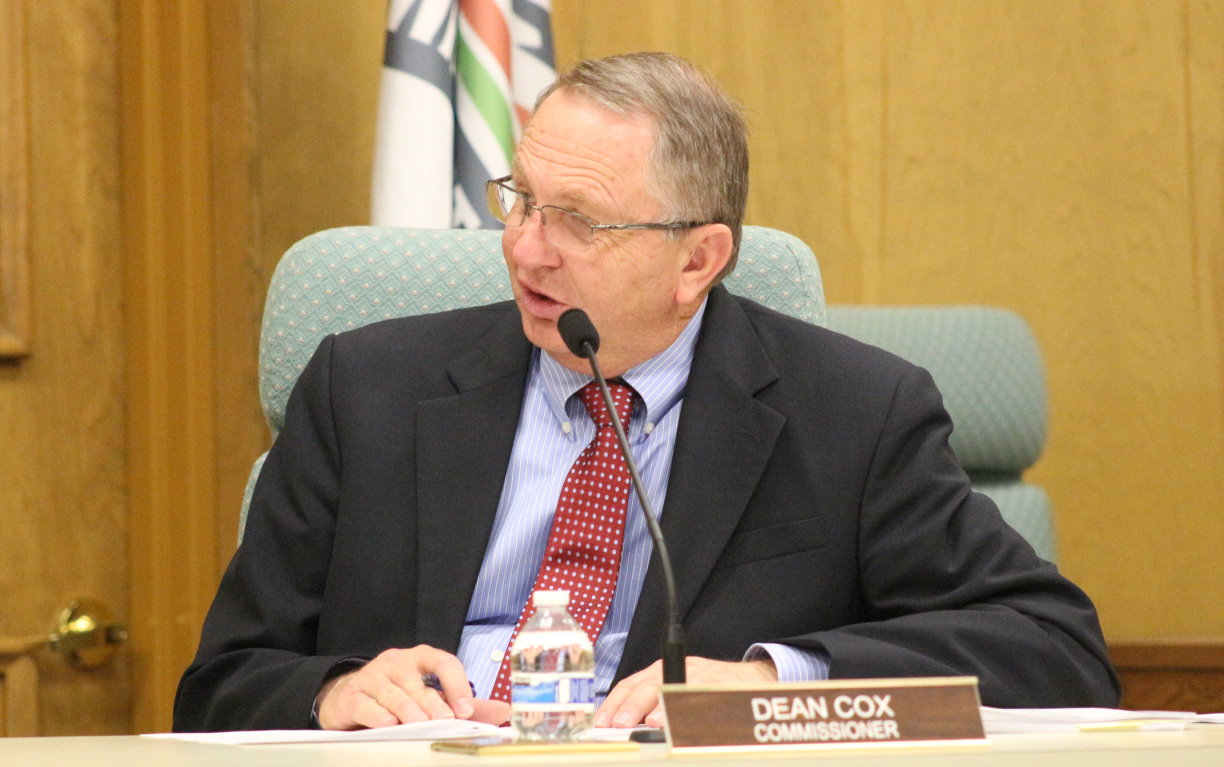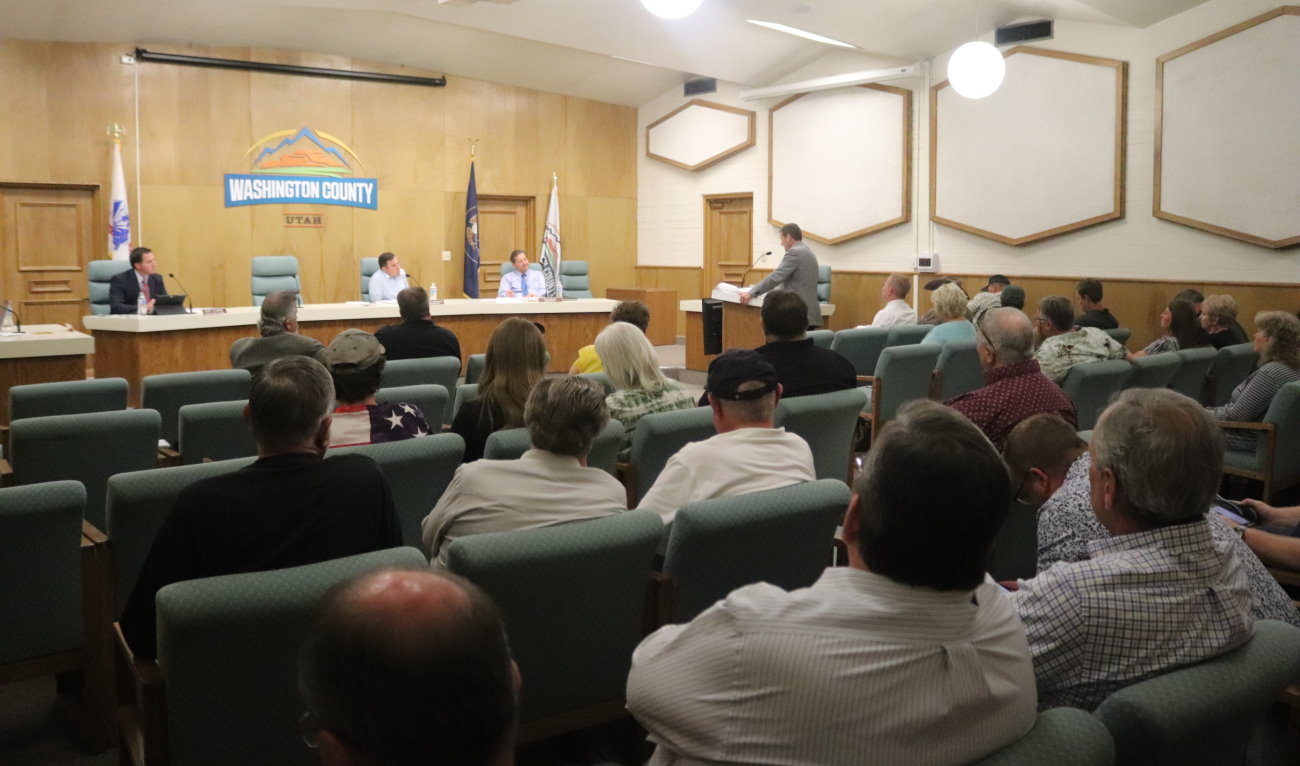
ST. GEORGE — The approval of future outdoor recreation projects like campgrounds and RV parks has been paused by Washington County officials as they work to amend county code that has been called “quite broad” by county commissioners.

The ordinance is flawed, Washington County Commissioner Dean Cox told St. George News over the phone Thursday.
“We have no limit on density,” he said, adding, “That rural recreation code could allow a lot of things to be placed in spots that conflict with Vision Dixie.”
Vision Dixie is a list of 10 principles county and municipal officials crafted in 2006 as a collaborative plan for the growth of Southern Utah. Guarding the area’s signature landscapes and focusing on public land conservation and goals to preserve critical lands are listed among those principles. The plan also also calls for “rich, connected natural recreation and open space.”
The county’s rural recreational project code has been a topic of discussion for a while, Cox said, and was recently brought to the forefront by issues surrounding an RV park developers wanted to put on a 20-acre property in Veyo.
While county code allows for many uses compatible with rural open space, an RV park is not one of them. In some cases, developers are able to bypass zoning restrictions on properties through the use of a conditional use permit, or CUP. Developers were granted a CUP by the county planning commission, yet were later denied that when the County Commission sided with residents over the matter.

Read more: Washington County Commission rescinds permit to build 20-acre RV park in Veyo
Reasons the county gave for the denying the permit were the proposed density of RVs over 20 acres not being appropriate for the area, incomplete site plans and other issues.
“We’re going to sit down and give detail as to when and where we allow the conditional use permit for outdoor recreation,” Washington County Commissioner Victor Iverson told St. George News prior to a meeting with the planning commission Tuesday morning to discuss ways to tighten up the county code.
In addition to the County Commission, planning commission and other county officials, a number of interested third parties, primarily property owners and developers, were also at the meeting, Cox said.
“Our current code requires evaluation and a lot of things the planning commission has overlooked,” Cox said. “I think we need to fix it.”
The county has had the outdoor recreation projects ordinance for around two years, Cox said, adding that it’s common for ordinances to be reviewed and amended as deemed necessary.
The general consensus of the County Commission is that the current code is too broad and needs to be reined in with more precise definitions and guidelines for CUPs. This will help prevent projects from potentially going into places where their use would be incompatible or destroy the viewsheds for residents, Cox said.

“(The code) allows people to establish yurts and campgrounds in open space transitional areas,” Iversion said. “It was always meant to be a low-impact type of setting. We wanted to give (the code) more definition as it was quite broad in what it allowed.”
With increased tourism coming to Washington County over the last decade, Iverson said the commission understands there’s a need for more campgrounds and related facilities.
“We don’t have as many public campgrounds as we should,” he said.
The process of reviewing the code is estimated to take about three months, Iverson said. Once the code is amended, the temporary ban on new projects will be lifted.
Some developers and property owners are worried the final product may prevent them from engaging in future projects.
“This may stop us, especially in the future,” said Sam Moyle, who has been developing a “glamping” site on Kolob Road near Virgin.
While a conditional use permit for Moyle’s project was granted by the commission, he’s not so sure another would be now.

“Our particular business is a little bit special, I’m not sure if they would let us expand more.”
Ted Spilsbury, whose family owns property on Kolob Mountain that they want to develop as an outdoor recreation getaway for family that would include cabins and a campground, said he felt “blindsided” by the sudden moratorium on future projects.
“They put a pause on a very good plan for our family,” Spilsbury said.
A point was raised by some developers that Cox owns a cabin on Kolob Mountain, suggesting his support for amending the ordinance may be more from a “not in my backyard” attitude than as a county commissioner.
Cox said that wasn’t the case at all, yet acknowledged he nonetheless had concerns as a property owner in that area.
“Do we really want an undefined amount of density up there?” Cox said.
Another worry is that the county may take a “planned development” approach for new projects. This route gives the County Commission more control over what can go into a development as developers bring aspects of the project in for approval piece-by-piece. Site plans must also have a particular level of detail to them that developers may not otherwise have to supply outside of a planned development scenario.
Putting that level of engineering into a plan that could be potentially rejected can be an expensive prospect for developers.
“We are sensitive to the idea of making someone go through so much of a process without knowing if they’ll get approval,” Iverson said, adding the planned development route is being looked at as just another tool to be considered, and not the final result as the process is still in the early stages at this point.
However, the overall goal is to tighten and simplify the code for all involved, he said.
“We want to make government work for everybody and want to support the property rights of both sides of the fence. So we’re sensitive to the property rights of the people who want to develop and all those neighborhoods already there.”
Email: [email protected]
Twitter: @MoriKessler
Copyright St. George News, SaintGeorgeUtah.com LLC, 2019, all rights reserved.